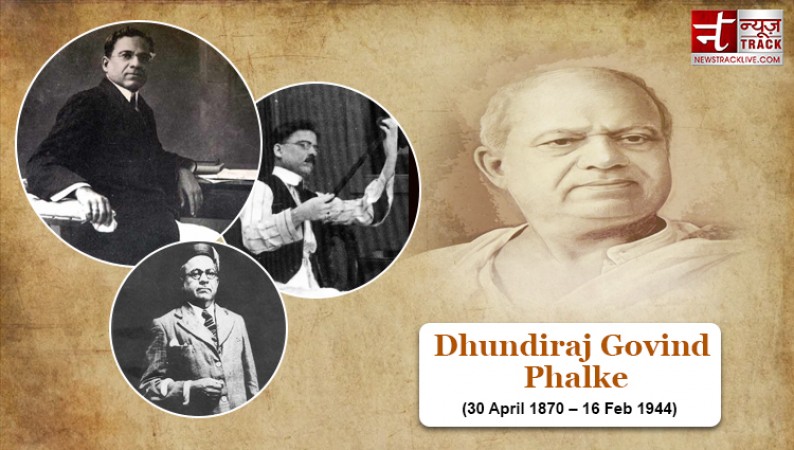
New Delhi: Dhadasaheb Phalke, known as the "Father of Indian Cinema," needs no introduction. He is admired by all Indian film industries because it was he who introduced Indians to cinematic beauty. His real name is Dhundiraj Govind Phalke, for those of you who are living under a rock. He began his professional life as a photographer. He was born on April 30, 1870, in Nashik, Maharashtra. However, after he saw the silent French film Life of Christ, his life experienced a significant turn. He made the decision to pursue the craft of filmmaking at that point. To pursue his passion, he travelled to London.
Dadasaheb Phalke, real name Dhundiraj Govind Phalke, was his most popular moniker. He is revered as the "father of Indian cinema" and was a legendary figure in the arts. At a time when cinema was still a relatively new medium, he served as a producer, director, and screenwriter. As the first Indian feature film of its length, "Raja Harishchandra," directed by Phalke in 1913, is acknowledged as a milestone. In a career that spanned almost two decades, he was also a prolific filmmaker. In his honour, the Dadasaheb Phalke Award for lifetime achievement in Indian cinema was established by the Indian government. On this day in 1944, Phalke passed away.
Phalke was born to a Marathi-speaking family on April 30, 1870, in Bombay. He was one of seven children raised by a priest and scholar of Sanskrit. When he was 15 years old, Phalke enrolled in the famed Sir Jamsetjee Jeejeebhoy School of Art in Bombay and successfully completed a year-long sketching course.
After finishing a year-long drawing study at the Maharaja Sayajirao University of Baroda, he enrolled at the Kala Bhavan. He quickly purchased a film camera and started playing with it, trying out printing and photography.
He launched a business called "Shri Phalke's Engraving and Photo Printing" after being given permission to utilise the Kala Bhavan's equipment. After first failing, he succeeded by creating stage curtains for theatre companies. Phalke began receiving minor roles in their plays as a result of the alliance, which also had its own benefits. He also spent some time as a photographer for the Archaeological Survey of India.
Work and legacy: After seeing "Amazing Animals" in a theatre in then-Bombay, Phalke was quickly lured to the world of motion films. In 2012, he quickly acquired a camera and left for London to begin his filmmaking education.
He founded the Phalke Films Company after his return, a film production company. He made the decision to film the life of Raja Harishchandra, wrote the script, and put casting notices in the neighbourhood media. Because no women could be found to play the parts, men were cast to play the characters. The movie was filmed for six months, and on April 13, 1913, it had its world premiere at the Olympia Theatre in Bombay.
"Raja Harishchandra" is acknowledged by the Indian government as the country's first feature film. The film's commercial success opened the path for India's film industry to get off the ground. With his captivating flicks like "Mohini Bhasmasur," "Satyavan Savitri," and "Lanka Dahan," Phalke would enjoy a long and successful career.
With the exception of a temporary hiatus from the camera, he continued to continuously produce and make films. In a vast collection of work, Phalke claims credit for 27 short films and 95 full-length movies. However, as the world was quickly evolving, sound films became popular. Soon, Phalke discovered that he was no longer at the peak of the mountain; his last movie was 1937's "Gangavataran." He lived his last years at Nashik, where he passed away on February 16, 1944, at the age of 73.